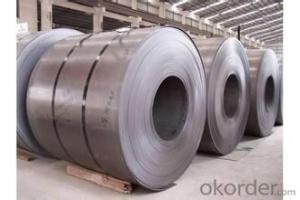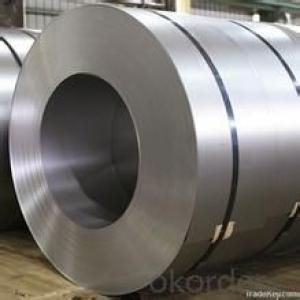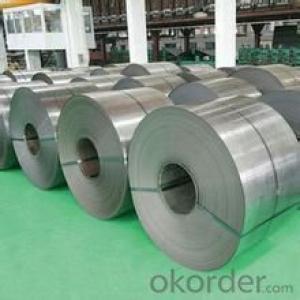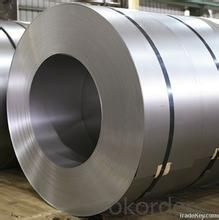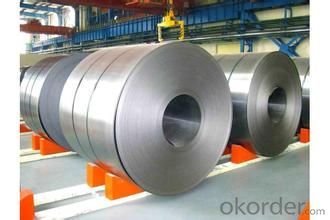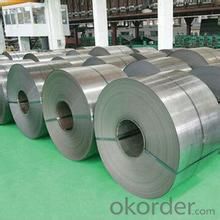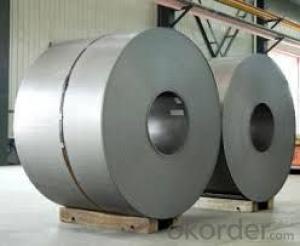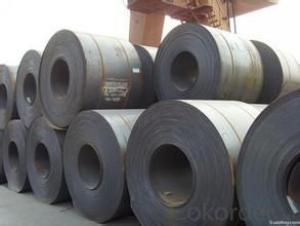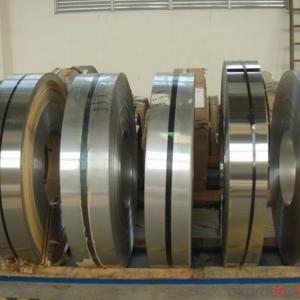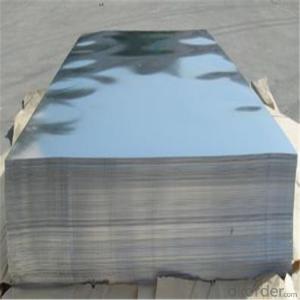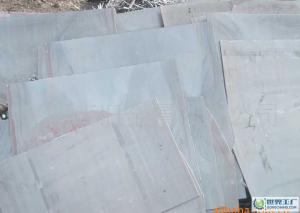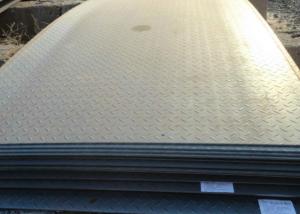Hot Rolled Steel sheet - SAE 1006/1008
- Loading Port:
- Tianjin
- Payment Terms:
- TT OR LC
- Min Order Qty:
- 100 m.t.
- Supply Capability:
- 500000 m.t./month
OKorder Service Pledge
OKorder Financial Service
You Might Also Like
Description:
Rolled to its final dimensions while it’s hot enough to scale, our hot-rolled steel is an amalgamation of the various qualities of steel. It can be in the form of plates, sheets and coils.
Specification:
Product: | Hot Rolled Steel Coils/Sheets |
Material: | Q195,Q235,A36,SS400,S235JR,Q345,ST37-2, CCSB etc |
Standard : | JIS G3002 GB/T251B |
Technique: | hot rolled |
Thickness | 1.2mm to 200mm |
Tolerance of thickness: | :+/-0.03mm |
Width: | 750mm-2000mm |
Tolerance of width: | :+/-5.00mm (aiming to +/-2.00mm) |
Normal width: | 914mm, 1000mm, 1200mm, 1219mm, 1250mm,1500mm |
Length: | According to requirement |
Coil ID: | 508mm-610mm |
Coil Weight: | 10-25 Metric Tons |
Surface: | Black, Chromate, fingerprint resistant treatment, slight oiled or non-oiled, dry |
Port of Loading: | Tianjin/Shanghai port |
Packaging Details: | Standard export packing or according to the clients required |
Delivery Time | Within 30 days after received 30% deposit or workable L/C |
Payment Terms: | L/C,T/T |
Images:
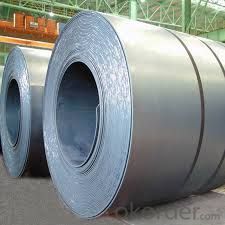
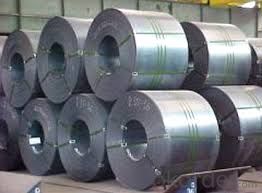
Our Hot-Rolled Steel Sheets and Coils are applied to a wide range of uses such as automobile, electrical appliance, machinery manufacturing, container manufacturing, shipbuilding, bridge, pipeline, and receive high acclaim from our customers for its excellent quality.
- Q: Can steel sheets be used in acidic environments?
- Yes, steel sheets can be used in acidic environments but it is important to choose the appropriate type of steel and take certain precautions. Stainless steel, particularly grades with high levels of chromium and nickel, is highly resistant to corrosion and can withstand acidic environments. These types of steel sheets form a passive protective layer on their surface when exposed to oxygen, which prevents further corrosion. However, not all types of steel are suitable for acidic environments. Carbon steel, for example, is prone to corrosion in acidic conditions and would not be recommended for such applications. Additionally, the concentration and temperature of the acid can also affect the performance of steel sheets. To ensure the best performance in acidic environments, it is advisable to consult with steel suppliers or corrosion engineers who can recommend the most appropriate type of steel for specific conditions. It is also important to regularly monitor and maintain the steel sheets to prevent any potential damage or corrosion.
- Q: Are steel sheets suitable for automotive exhaust systems?
- Yes, steel sheets are commonly used in automotive exhaust systems due to their durability, heat resistance, and cost-effectiveness.
- Q: Can steel sheets be used in corrosive chemical environments?
- In corrosive chemical environments, the use of steel sheets is possible, but it is crucial to consider the specific type of steel and its resistance to corrosion. Stainless steel, for instance, is widely employed in such environments due to its excellent corrosion resistance properties. It contains a minimum of 10.5% chromium, which creates a protective oxide layer on the steel's surface, preventing further corrosion. Consequently, stainless steel sheets are suitable for a diverse range of corrosive chemical environments, including those involving acids, alkalis, and salts. However, it is vital to select the appropriate grade of stainless steel that matches the specific corrosive chemicals present in the environment. Furthermore, applying protective coatings or surface treatments can further enhance the corrosion resistance of steel sheets in harsh chemical environments. Seeking advice from corrosion experts or engineers is essential in determining the most suitable steel grade and protective measures for a particular corrosive chemical environment.
- Q: Are steel sheets suitable for roofing?
- Yes, steel sheets are suitable for roofing. Steel is a durable and strong material that can withstand harsh weather conditions, such as heavy rain, snow, and strong winds. It is also resistant to fire, pests, and rot, making it a reliable choice for long-term roofing solutions. Steel sheets are lightweight and easy to install, reducing labor and installation costs. Additionally, they are available in a variety of colors and finishes, allowing for customization to match the aesthetic of any building. Overall, steel sheets provide excellent protection and longevity, making them a popular choice for roofing applications.
- Q: Can steel sheets be used for marine applications?
- Yes, steel sheets can be used for marine applications. Steel is often used in the construction of ships, barges, offshore platforms, and other marine structures due to its strength, durability, and resistance to corrosion in saltwater environments.
- Q: Can steel sheets be used for architectural sculptures?
- Yes, steel sheets can be used for architectural sculptures. Steel is a versatile and durable material that can be easily manipulated to create intricate and unique designs. It offers strength and stability, making it suitable for large-scale sculptures. Additionally, steel sheets can be cut, welded, and shaped to achieve various forms and textures, allowing artists to bring their architectural visions to life.
- Q: What is the minimum order quantity for the steel sheets?
- The minimum order quantity for the steel sheets is 100 units.
- Q: How do steel sheets perform in terms of wear resistance?
- Steel sheets generally perform very well in terms of wear resistance. Steel is known for its strength and durability, and steel sheets are no exception. They are able to withstand heavy loads, abrasion, and impact, making them suitable for a wide range of applications where wear resistance is crucial. Additionally, steel sheets can be further enhanced with surface treatments or coatings to improve their wear resistance even more. Overall, steel sheets are a popular choice for industries that require materials capable of withstanding wear and tear over extended periods of time.
- Q: What are the different sheet metal cutting techniques for steel sheets?
- Steel sheets can be cut using various techniques, specifically designed for this purpose. Here are some commonly employed methods: 1. Shearing: By applying a high force, a shear or a pair of blades is used to cut the steel sheet. This method is ideal for straight cuts and works with both thin and thick steel sheets. 2. Laser cutting: A high-powered laser beam is employed to slice through the steel sheet. This technique offers high precision and allows for intricate designs. It is suitable for thin and thick steel sheets. 3. Plasma cutting: Here, a plasma torch generates an electrically conductive jet of plasma to cut through the steel. This method is commonly used for thick steel sheets and provides fast cutting speeds. 4. Waterjet cutting: The steel sheet is cut using a high-pressure jet of water mixed with abrasive particles. Waterjet cutting is versatile and can handle different thicknesses of steel sheets. It is also suitable for cutting heat-sensitive materials. 5. Punching: A punch and die set are used to create holes or various shapes in the steel sheet. Punching is a cost-effective method for repetitive cuts and can be used with thin and thick steel sheets. 6. Abrasive cutting: Thin steel sheets can be ground through using an abrasive wheel or disc. This technique provides a smooth finish. Factors such as the steel sheet's thickness, required precision, design complexity, and material heat sensitivity determine the choice of cutting technique. Each method has its own advantages and limitations, so it is crucial to take these factors into account when selecting the appropriate method for cutting steel sheets.
- Q: Are the steel sheets resistant to scratching or abrasion?
- Yes, steel sheets are highly resistant to scratching or abrasion. Steel is known for its exceptional durability and strength, making it resistant to various forms of damage, including scratches and abrasions. The smooth and hard surface of steel sheets makes them less susceptible to scratches caused by sharp objects or rough surfaces. Additionally, the strong molecular structure of steel prevents it from easily wearing down or getting scratched, ensuring its longevity even in high-traffic or demanding environments. Overall, steel sheets are an excellent choice when it comes to resistance against scratching or abrasion.
Send your message to us
Hot Rolled Steel sheet - SAE 1006/1008
- Loading Port:
- Tianjin
- Payment Terms:
- TT OR LC
- Min Order Qty:
- 100 m.t.
- Supply Capability:
- 500000 m.t./month
OKorder Service Pledge
OKorder Financial Service
Similar products
Hot products
Hot Searches
Related keywords
